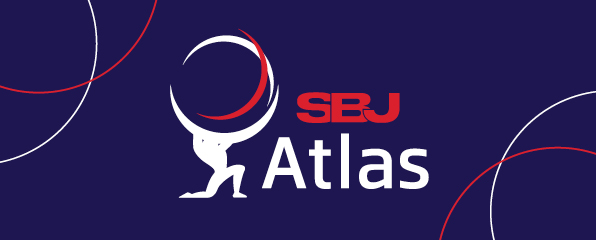U.S. Olympic & Paralympic Committee Honors Collegiate Support as a Driver of Team USA Success in Tokyo & Beijing
The United States Olympic & Paralympic teams have a “secret” recipe for success that’s helped Team USA athletes climb the medal podium more than any other country in the world.
Colleges and universities aren’t just a place millions of students attend to further their social and scholastic education and development. These institutions of higher learning also provide fertile environments for the next generation of athletes to grow and thrive on and off the field.
Thanks to this invaluable pipeline, current and former collegiate athletes dominate United States Olympic & Paralympic teams, which help guide Team USA to success at the international level, whether it’s during the Summer or Winter Games.
“The collegiate athletics system is essential to growing and keeping sport strong in our country,” said USOPC CEO Sarah Hirshland. “Athletes who competed collegiately were the foundation of Team USA’s success in Tokyo and Beijing. We’re excited to honor the leaders who foster these sport opportunities and support student-athletes on campus.”
At the 2020 Olympic and Paralympic Games in Tokyo, 76% of U.S. Olympians (475 athletes) and 50% of U.S. Paralympians (122 athletes) honed their skills in college before taking to the world’s biggest stage. At the 2022 Winter Games in Beijing, approximately 40% of U.S. Olympians (85 athletes) and 25% of U.S. Paralympians (17 athletes) were current or former collegiate student-athletes.
In Tokyo 2020, 82% of U.S. Olympic medal-winners competed in college sports, while 47% of U.S. medalists at 2022 Beijing were current or former college athletes.
For contributing the most Team USA student-athletes in Tokyo, Stanford University, UCLA, the University of Florida and the University of Illinois are honored as the Team USA Collegiate Impact Award Class of 2020 and were recognized during the 2022 Team USA Collegiate Recognition Awards on Dec. 6 in Las Vegas. Meanwhile, the University of Minnesota, University of Wisconsin, Boston College and University of New Hampshire are 2022 honorees for their impact at the Beijing Games. Also recognized were eight schools for their sport-specific contributions to the U.S. Olympic Teams in Tokyo and Beijing:
-
University of Texas/USA Diving Collegiate Impact Award
-
University of Notre Dame/USA Fencing Collegiate Impact Award
-
University of Utah/U.S. Ski & Snowboard Collegiate Impact Award
-
University of California, Los Angeles/USA Softball Collegiate Impact Award
-
University of Georgia/USA Swimming Collegiate Impact Award
-
University of Oregon/USA Track & Field Collegiate Impact Award
-
Stanford University/USA Water Polo Collegiate Impact Award
-
Pennsylvania State University/USA Wrestling Collegiate Impact Award
Not only do current and former college student-athletes fuel Team USA’s success, but they also impact more than 100 nations worldwide.
At the 2020 Olympic Games, 642 international collegiate athletes represented 117 nations with 10% of them bringing home invaluable hardware. Canada featured 90 athletes who attend(ed) U.S. colleges and universities, while Australia (38), Mexico (34), Nigeria (28) and Great Britain (27) rounded out the top-5.
“Every year, we welcome student-athletes from around the world to train, compete and get a top-notch education, including many international athletes who go on to represent their country at the Olympic Games,” University of Florida Athletics Director Scott Stricklin said. “These student-athletes culturally enrich our athletics department and also our broader university campus, and we’re proud of this tradition in Gainesville.”
Unlike other countries, Team USA receives no government funding, but that hasn’t hindered U.S. Olympians from achieving success and being mainstays on the podiums. However, our country’s collegiate athletics system annually provides Olympic sport infrastructure for Team USA athletes and athletes around the world to the tune of $5.6 billion. This investment includes scholarships, coaching, sports medicine, competition, strength and conditioning, state-of-the-art facilities and more.
As American state institutions leverage revenue-generating operations like business schools to support broad academic offerings, the same is true in athletics with 80% of operational revenue in the average Power Five athletics department stemming from commercial value tied to football (50%) and overall athletics support (30%). Approximately 21% of this operating budget is used to support approximately 20 Olympic sport programs.
Nearly 6,100 Olympic sport programs across Division I institutions provide opportunities to more than 146,000 student-athletes annually, including 56.1% of Olympic student-athletes who are women as the collegiate landscape celebrates 50 years of Title IX.
To further facilitate opportunities and connections between U.S. colleges and the Olympic Movement, the USOPC launched its collegiate partnership department in 2016 to align leaders to advance athletic programming on campus, remove obstacles faced by college athletes competing within the intercollegiate and Team USA systems, and message the value of Olympic/Paralympic sport opportunities on campus.
Pierre de Coubertin, the father of the modern Olympic Games, was fond of the “broad-based athletic education accessible to all” created by the Olympics, so it’s no surprise that American colleges and universities offering a similar broad-based experience to millions produce so many impactful current and former student-athletes.





